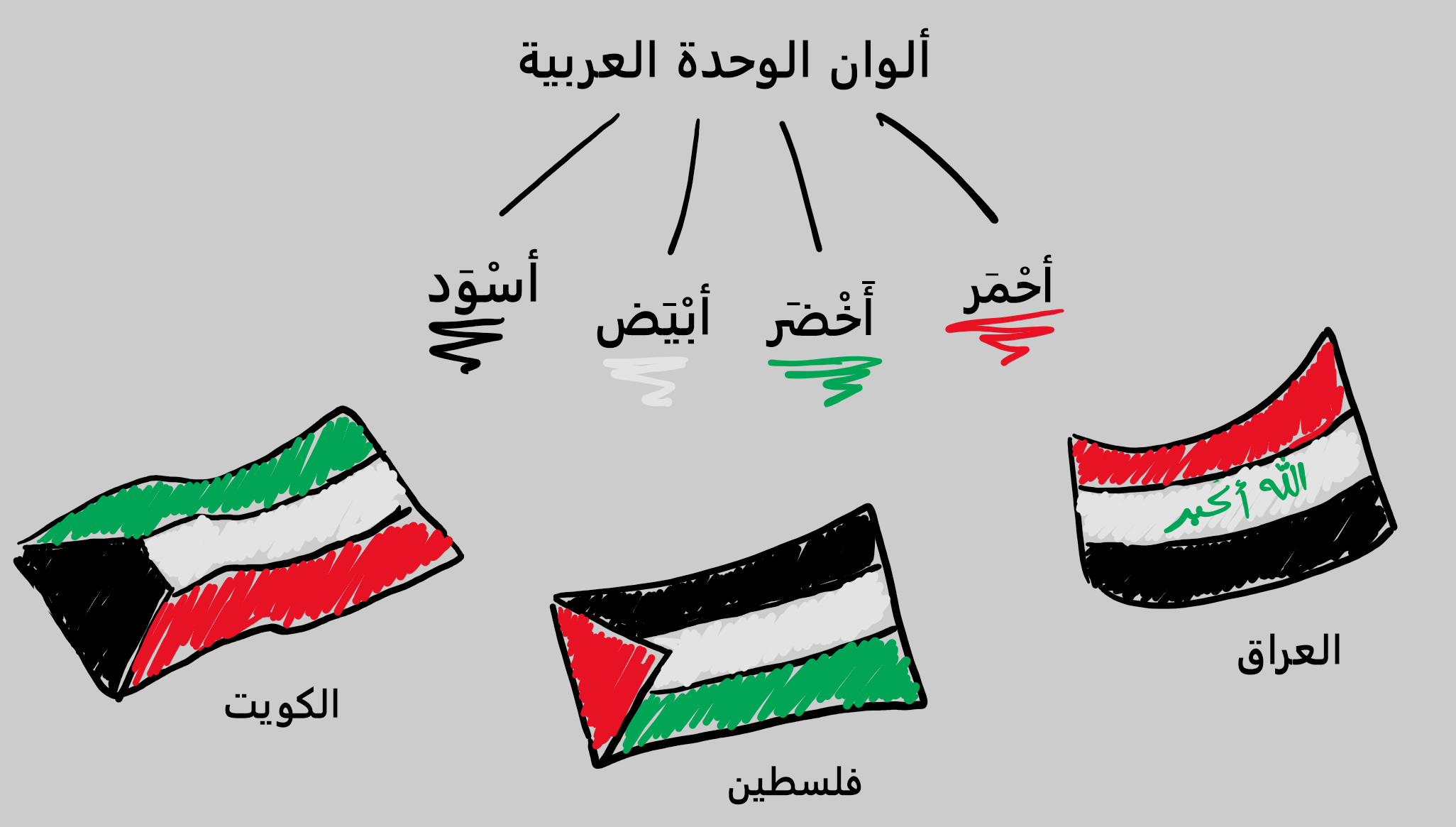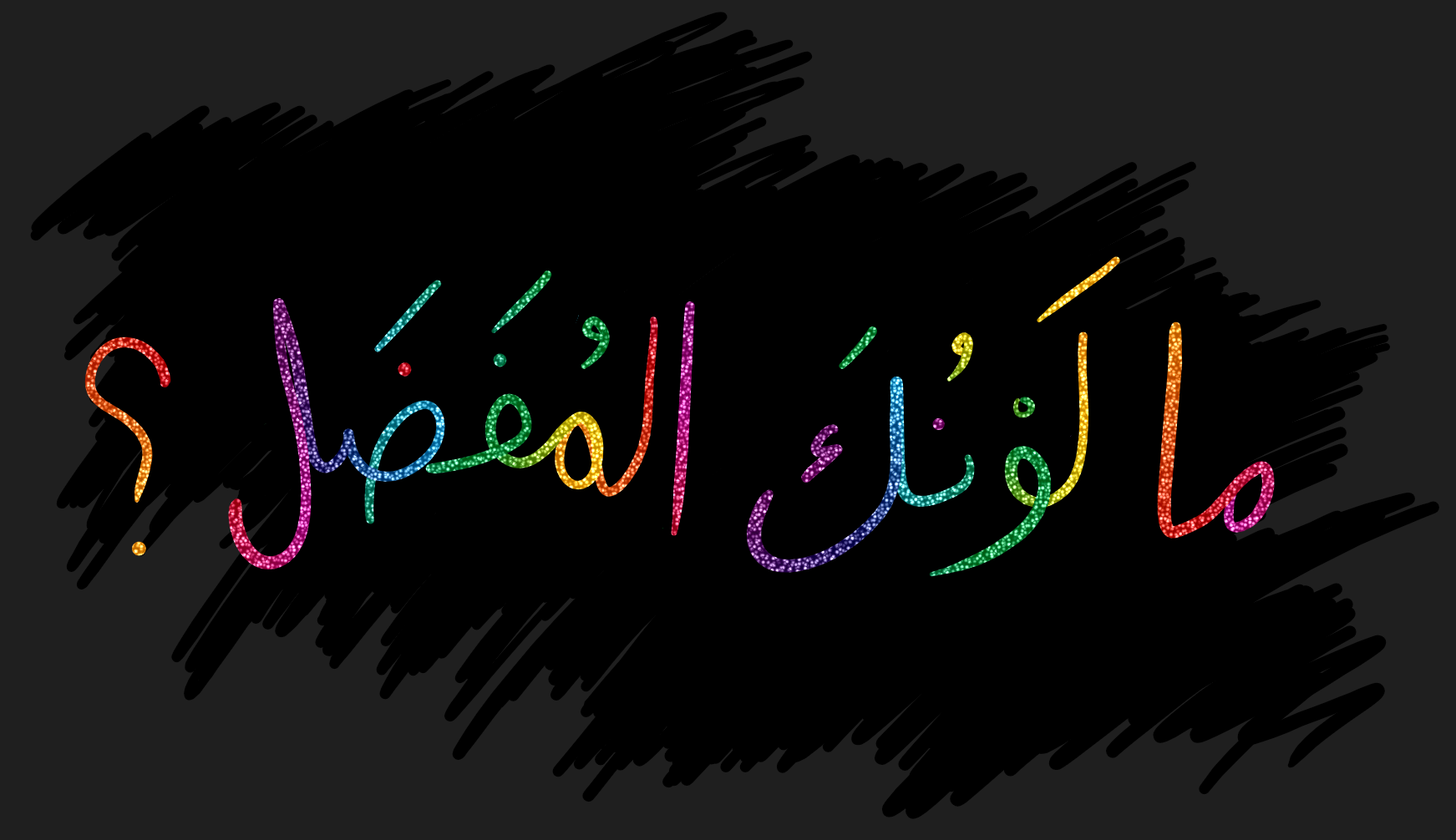Colors in Arabic and Arab Culture Posted by yasmine on Nov 6, 2019 in Arabic Language, Culture
In this post we’ll be looking at what some colors symbolize in Arab culture and the flags of some Arab states. In addition to the Arabic names of some colors that don’t exist in your regular basic color list. I also thought to remind you how to ask someone what their favorite color is in Arabic.✨? ?
Generally speaking:
Red أحْمَر in the Middle East can be associated with love as it is in other cultures, in addition to caution, anger, and evil.
Green أَخْضَر in the Middle East represents the religion of Islam and thus most Arabs would associate it with peace and spirituality. Green is also used in several national flags as a symbol of Islam. Some of these include Afghanistan, Algeria, Iran, Pakistan, Saudi Arabia and Sri Lanka.
Black أسْوَد and white أبْيَض can both represent rebirth and mourning. Modesty can be associated with black as well.
Flags:
Have you noticed that several flags of Arab states have the color combination of white, black, green and red? Can you name a few? These four colors are referred to as the Pan-Arab colors ألوان الوحدة العربية. Some examples include Iraq, Syria, Jordan, Kuwait, and Palestine.
The pan-Arab colors were used for the flag of the Arab Revolt against the Ottoman Empire in 1916. The four colors derived their symbolic meaning from a verse by 14th century Iraqi poet Safi Al-Din Al-Hilli: صفي الدين الحلي “White are our acts, black our battles, green our fields, and red our swords“.
بيض صنائعنا سود وقائعنا |
خضر مرابعنا حمر مواضينا |
Individually, each of the four Pan-Arab colors were intended to represent a certain Arab dynasty. These colors can also have a specific significance according to each Arab state. For example, in the Lebanese flag, red symbolizes the blood of the martyrs who struggled against the Ottoman empire. Whereas, in the Jordanian flag, it is the symbol of the reigning Hashemite dynasty الهاشميّون.
Next time you see the flag of one of these countries, say the colors in Arabic and think about what they symbolize for that specific country and its history.
Here are ten colors in Arabic you don’t come across very often in color lists. Notice how most of these colors come from a name of something of that color with a ي added to the end.
الأزرَق الداكِن navy blue فَيروزي أو تُركوازي turquoise رَمادي grey بَنَفْسَجي purple
خَمري burgundy (Burgundy is a historical region in east-central France. It’s famous for its Burgundy wines, hence in Arabic it’s called خَمري from خَمْر meaning wine or alcohol.)
كَستَنائي maroon (takes its name from the French word maroon, or chestnut, hence in Arabic كَستَنائي from كَستَناء meaning chestnut.)
فِضي silver (silver in Arabic is فِضة )
ذَهَبي gold (gold in Arabic is ذَهب)
فَحمي charcoal (charcoal in Arabic is فَحم)
زَيتوني olive (olive in Arabic is زَيتون)
What is your favorite color?
ما لَوْنُكَ المُفَضَل؟
My favorite color is…
…لَوني المُفَضَل هوَ
A few random colorful things in Arabic ?:
rainbow قَوْس قُزَح ? fireworks أَلْعاب نَاريّة ? paintings لَوحات ?

Build vocabulary, practice pronunciation, and more with Transparent Language Online. Available anytime, anywhere, on any device.






Comments:
Stephen H Franke:
Yaa halla bik wa mi’at marHaba…
Thank you for this interesting post in this blog (just found it and subscribed today).
Ref the Circassian part of your mentioned Jordanian origin: May I ask if you are perhaps from the sizable Circassian ethnic communities resettled and thriving in Jerash or the Wadi al-Seer district of Amman?
** Have you managed to maintain your proficiency in that original Circassian language (i.e. Chechen/Sheshani, Sherkessi, Daghestani, etc.)? The maintenance and routine use of that original Caucasian language is a major concern among generations of Circassian-origin groups in the several Jordanian-American populations resettled here in southern California.
** Jezaa’kum Allah khairaan. Today is Monday, November 25, 2019.
Regards,
Stephen H. Franke
San Pedro (Los Angeles Waterfront Area), California
(Formerly of Amman, Jerash, Petra, Wadi al-Seer, and al-Zarqaa’ during assignment to the US Embassy Amman)
yasmine:
@Stephen H Franke MarHaba Stephen!
So glad you are interested in the Arabic language blog. 🙂
Regarding my Circassian origin, my father’s grandparents actually settled in the Golan heights in Syria but then settled later in west Amman and Na’our. Yes, the Circassian language is endangered. It’s been very difficult to keep it alive especially for my generation. My husband speaks it a lot better than I can and only speaks Circassian to our one year old child while I speak to him in Arabic. English, I’m not worried about because I know he’ll pick it up everywhere else.
Since you’ve lived in Jordan, have you heard about Prince Hamzeh School? It’s the only school in the Middle East that teaches Circassian as an official subject. Here is a link to a short video about trying to save this language through this school and other means if you are interested.
https://www.youtube.com/watch?v=EXBCeaoaF7A
Salam!
Yasmine